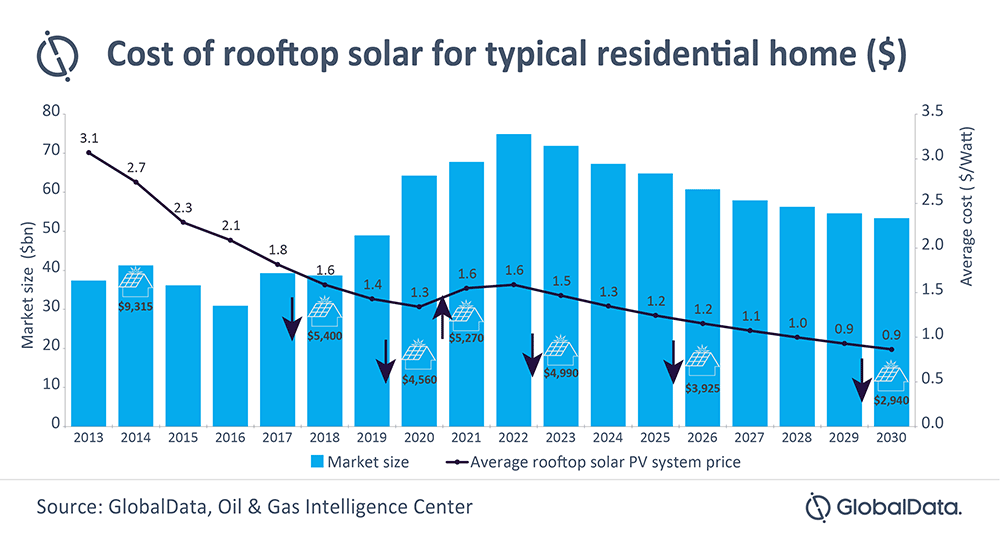CM Solar
Rooftop solar installation price will temporarily increase in 2022
A recent report by the leading data and analytics specialist GlobalData reveals that the value chain of the solar industry has experienced a significant hindrance since the pandemic outbreak in 2020. This situation is primarily due to a rise in the price of raw materials and a sharp increase in solar PV system prices caused by the delay in shipments, combined with a lack of workforce availability. This report predicts that the cost of rooftop solar for typical residential homes will moderately increase in 2022, at approximately USD$1.6/W.
However, according to Attaurrahman Ojindaram Saibasan, Power Analyst at GlobalData, the cost will decline gradually between 2023 and 2030, thanks to advancements in technology, the reduction of component posts, and the increasing production scale. Some countries have also provided temporary relief in the form of incentives and rebates to overcome the pandemic’s challenges.

Cost of Rooftop Solar for Typical Residential Homes (2013-2030)
Credit: GlobalData
Beyond the prediction, this report, “Rooftop Solar Photovoltaic (PV) Market, 2021: Global Market Size, Market Share, Major Trends, and Key Country Analysis to 2030”, found that the price of panel systems dropped every year between 2013 and 2020, after which COVID-19-related supply chain disruption abruptly stopped this trend.
“To put this in perspective, the cost of installing a rooftop solar system on an average detached residential property* was around $9,300 in 2014. This dropped by between $600-$900 each year, until 2020, with a price of $4,550. In 2021, this price rose by $700—a cost not seen since 2018. We don’t expect these costs to go back down now until 2023,” says Saibasan.
One-third of global rooftop solar cumulative capacity was installed in residential areas in 2020, with the rest present in the commercial and industrial (C&I) segment.
“The transition of both residential and C&I consumers to ‘prosumers’—someone that both produces and uses their own electricity—is increasing due to the adoption of solar panels within building materials, and a preference for small-scale solar in smart cities and microgrids. These are expected to stabilize growth in rooftop solar installations,” adds Saibasan.
In 2020, the global rooftop cumulative solar PV capacity stood at 248.8 gigawatts (GW), increasing 23.8% compared to 2019. The Asia-Pacific region accounted for 53.5% of the market share—with China alone accounting for 12.4% of the global market. Europe and North & South America (NA&SA) accounted for 29.1% and 13.6%, respectively. Governments in these regions are promoting rooftop solar PV installations through various long-term policies, financial incentives, subsidies, and tax benefits.
*The common residential rooftop panels used are 340W. For a 1,200 sq ft home, nearly 10 to 12 panels are required, the lowest has been considered for the calculation.
